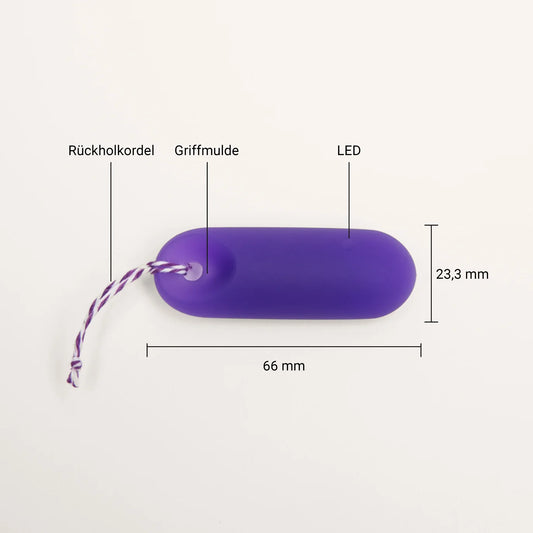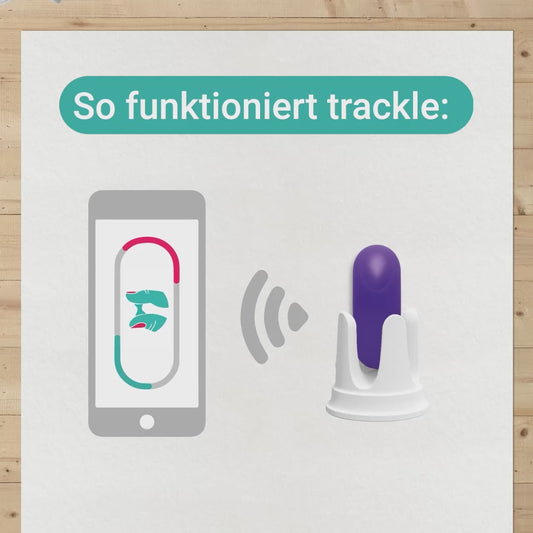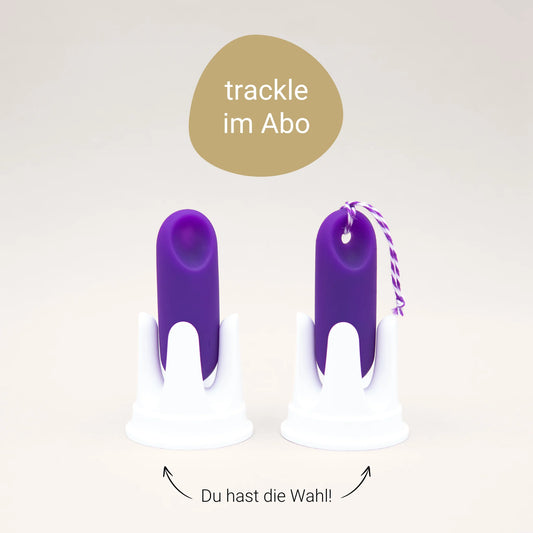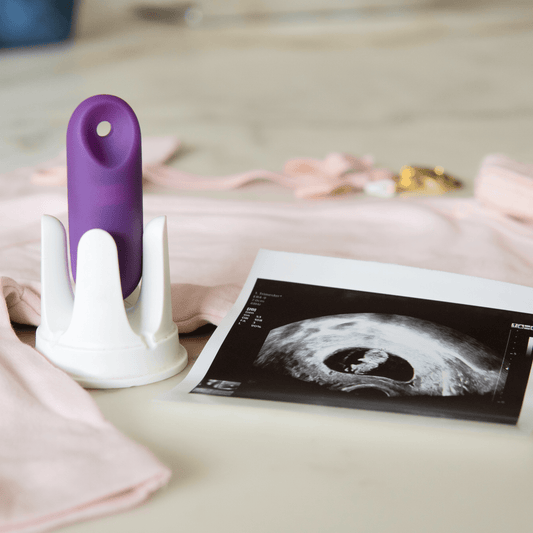
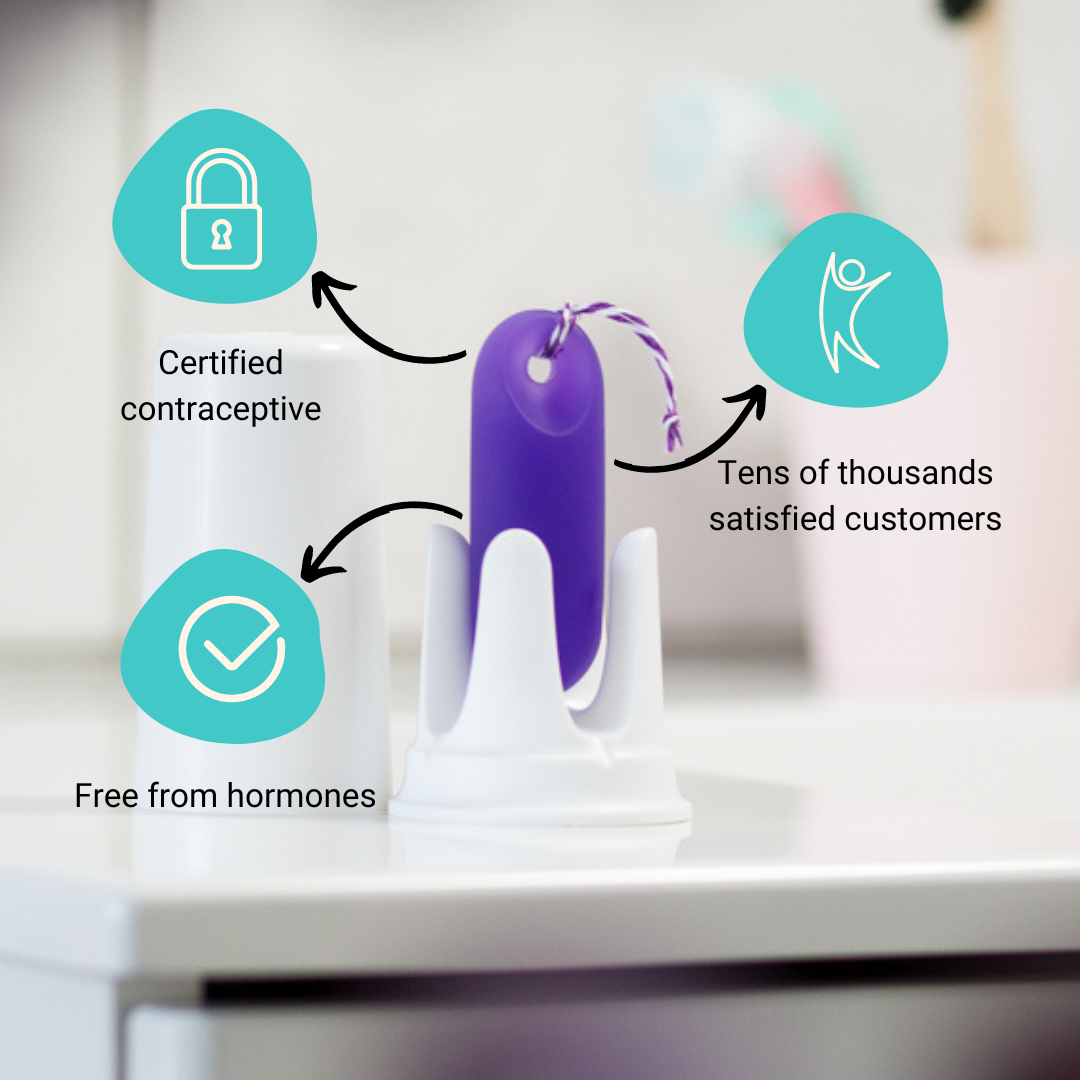
Precisely determine your fertility
Contraception or the desire to have children - you decide
Bekannt aus
Bestseller
-
trackleCatch sensor system with return strap
135 reviewsRegular price 269,90€Regular priceUnit price / per -
trackle Newbie Bundle
13 reviewsRegular price 294,90€Regular priceUnit price / per319,80€Sale price 294,90€Sale -
trackleGo: cycle determination in an affordable subscription
103 reviewsRegular price 13,49€Regular priceUnit price / per13,49€Sale price 13,49€ -
trackle sensor system
62 reviewsRegular price 269,90€Regular priceUnit price / per
New hits
-
trackle Newbie Bundle
13 reviewsRegular price 294,90€Regular priceUnit price / per319,80€Sale price 294,90€Sale -
FERTI·LILY conception support
No reviewsRegular price 34,99€Regular priceUnit price / per -
trackle notebook - in 3 variants
No reviewsRegular price 12,90€Regular priceUnit price / per12,90€Sale price 12,90€ -
trackleMug: Menstrual Mug in 3 sizes
No reviewsRegular price 12,90€Regular priceUnit price / per12,90€Sale price 12,90€
Offers
-
trackle Newbie Bundle
13 reviewsRegular price 294,90€Regular priceUnit price / per319,80€Sale price 294,90€Sale -
trackle Contraception Bundle
2 reviewsRegular price 314,90€Regular priceUnit price / per341,55€Sale price 314,90€Sale -
trackle Conception Bundle
No reviewsRegular price 279,90€Regular priceUnit price / per304,89€Sale price 279,90€Sale -
trackle Fertility Bundle
No reviewsRegular price 329,90€Regular priceUnit price / per354,79€Sale price 329,90€Sale
Über 70.000 begeisterte trackle Nutzerinnen: werde Teil der großen trackle Community🚀
Let customers speak for us
from 391 reviewsSo viel kann ich momentan noch nicht zu sagen da ich erst vor paar Wochen das verhütungspflaster abgesetzt habe
Und man noch kein Eisprung deswegen feststgestelt werden kann und ob ich fruchtbar bin oder nicht aber bin trotzdem zufrieden mit trackle
Ich bin sehr zufrieden. Habe die Pille abgesetzt und es geht mir viel besser. Es ist so einfach und unkompliziert.
Nach dem Abo zum probieren nun den Trackle per Festpreis gekauft. Ich bin nach wie vor zu 100% begeistert.
Nach verzweifelter Suche nach einer für meinen Körper vertretbaren Verhütungsmethode bin ich dann doch per Zufall auf trackle gestoßen (bzw. NFP)! Etwas schöneres kann man sich für den eigenen Körper wirklich nicht wünschen :D
Einzige Kritik: ich persönlich finde es sehr schwierig den Trackle ohne Rückholband zu entfernen und mir immer wieder 3m Ersatzband zu kaufen ist dann auf Dauer etwas teuer & verschwenderisch. Vielleicht wäre eine alternative Rückholmöglichkeit besser? (Z.B. größeres Loch, damit man schon mit einem Finger einfach nur einhaken und rausziehen kann)
Ansonsten ist die Erfahrung einfach wunderbar!
Ich nutze Trackle schon seit Jahren. Habe mir vor kurzem wieder einen neuen bestellt, da ich nach meiner Schwangerschaft wieder damit verhüten und später nochmal schwanger werden möchte.
Ich würde Trackle immer wieder kaufen und empfehle es auch meinen Freundinnen, die eine Alternative zur Pille suchen.
Einzige Verbesserung meiner Meinung nach wäre eine Partner Funktion, bei der mein Mann per App auf seinem Handy alles mitverfolgen kann.
Ansonsten Super Produkt!
Ich habe gleichzeitig mit dem Erlenen der symptothermalen methode und dem trackle begonnen und bin nun im ersten Zyklus. Mit dem trackle fühle ich mich bisher sehr gut unterstützt, gerade was das Messen der Temperatur angeht. Zum lernen benutze ich neben der App natürlich trotzdem noch klassisch das Tabellenzyklusblatt und die Bücher (macht das auf jeden Fall, damit ihr versteht was die app da ausrechnet. Zumindest zu Beginn). Beim ersten einführen des trackle empfand ich ihn irgendwie groß und habe sein Gewicht etwas gespürt, was mich anfangs irritiert hat, aber nach zwei drei Tagen Eingewöhnung hat sich das gelegt. Lässt sich jedenfalls super in die Abenroutine einbauen und ist nun genauso schnell drin, wie zb. die Knirschschiene vom Zahnarzt ;-).
Was ich sinnvoll fände wäre eine Art silikonband, statt dem klassischen Rückholband, das ich wie den trackle jeden Morgen reinigen kann. Oder ein trackle mit fest installierter Rückholhilfe. Gerade wenn man lange Fingernägel hat, fände ich das zumindest eine enorme Erleichterung. Denn wie ich ihn künftig ohne Band rausholen soll, ist mir aktuell noch ein Rätsel.
Und für die App würde ich mir wünschen, dass die Symptome Mittelschmerz und Brust auswählbar sind und in der zykluskurve angezeigt werden könnten. Sonst fühle ich mich bestens mit dem trackle und der App.
Es ist gewöhnungsbedürftig, am Anfang noch eine kleine Herrausforderung daran zu denken und einzusetzten. Ich hab erst vor einem Monatg die Pille abgesetzt, somit konnte er auch noch keinen Eisprung messen. Darausschließend kann ich noch keine stellung zur Sicherheit als verhütung geben.
Absolute Empfehlung! Man spürt den trackle überhaupt nicht. Die Temperaturmessung ist extrem präzise und auch die Synchronisation mit der App funktioniert gut. Ich würde mir nur in der App wünschen, dass man auch die Ergebnisse der Ovulationstests eintragen kann. Ich benutze das nämlich auch und die zeigen bei mir den Eisprung auch zusätzlich zuverlässig an.
Hat mir mega weitergeholfen, um meinen Körper zu verstehen!
Der trackle lässt sich leicht einführen und entfernen, die Temperaturkurve ist gut erkennbar, die App schön übersichtlich.
Die Verwendung von trackle hat so einiges für mich verändert. Ich lerne meinen Zyklus endlich richtig kennen und kann jetzt nachvollziehen welche Symptome eher zyklusbedingt sind und welche nicht. Außerdem ist die Anwendung super einfach und ich bemerke beim Tragen gar nichts. Das Einzige, was ich bemängeln kann ist die Länge des Rückholbändchens. Das hat für mich nur einen Monat gereicht und ich würde mir wünschen eine größere Packung zu haben. Ansonsten bin ich vollkommen happy!
Einfache Handhabung und tolle Möglichkeit, seinen Körper besser kennenzulernen. Habe es in meinem Bekannten/-Freundeskreis schon weiter empfohlen!
Ich lerne meinen Körper ganz neu kennen und finde es echt spannend...
trackleGo Zyklusbestimmung im günstigen Abo
Der trackle ist wirklich sehr angenehm zu tragen und nicht spürbar. Ich finde es total spannend, seinen Zyklus besser kennenzulernen und z.B. den Beginn der Periode anhand der aktuellen Temperatur und Zervixschleimqualität besser vorhersehen zu können, vor allem nach dem Absetzen der Pille.
Hast Du noch Fragen?
Viele Frauen sind gerade auf der Suche nach einer Alternative, sicher und hormonfrei zu verhüten. Die symptothermale Methode ist dafür perfekt geeignet – und durch die digitale Herangehensweise von trackle besonders einfach und komfortabel, – auch, wenn das Thema noch neu für Dich ist. Solltest Du Fragen haben, hilft Dir unser Support (Live-Chat oder Email) gerne weiter – und auf unserer Seite findest Du jede Menge Informationen, Videos, Kurse und Webinare zu hormonfreier Verhütung und Zyklusbeobachtung.

Das trackle Webinar
Du willst mehr über hormonfreie Verhütung und trackle erfahren? Dann besuche jetzt unser kostenloses Online-Webinar!
Es erwarten Dich jede Menge spannende Informationen!
Product categories
-

trackle cycle computer
trackle Zykluscomputer
-

Period products
trackle Periodenprodukte
-

Courses, Guides & Books
Kurse, Guides & Bücher
-

Gift ideas
trackle Geschenkideen
-

Contraception
trackle Verhütung
-

Free extras
Kostenlose Extras









